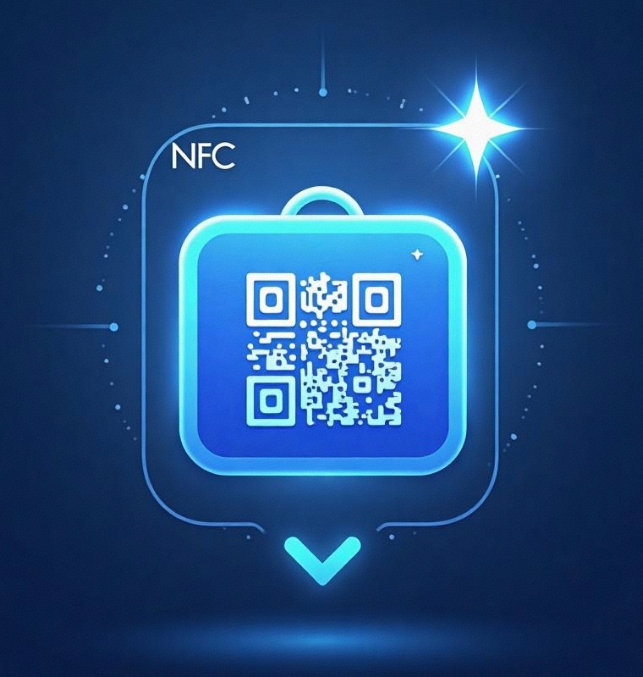Integration of Payment Systems and E-commerce Features in APP Development
- latest articles
- 1.DApp Development & Customization: Merging Diverse Market Needs with User Experience 2.Analysis of the Core Technical System in DApp Project Development 3.How to achieve cross-chain interoperability in Web3 projects? 4.How does the tokenization of points reconstruct the e-commerce ecosystem? 5.How to Set and Track Data Metrics for a Points Mall? 6.What is DApp Development? Core Concepts and Technical Analysis 7.Inventory of commonly used Web3 development tools and usage tips 8.Development of a Distribution System Integrated with Social E-commerce 9.Six Key Steps for Businesses to Build a Points Mall System 10.What is DApp Development? A Comprehensive Guide from Concept to Implementation
- Popular Articles
- 1.Future Trends and Technology Predictions for APP Development in 2025 2.Analysis of the DeFi Ecosystem: How Developers Can Participate in Decentralized Finance Innovation 3.From Zero to One: How PI Mall Revolutionizes the Traditional E-commerce Model 4.DAPP Development | Best Practices for Professional Customization and Rapid Launch 5.Recommended by the Web3 developer community: the most noteworthy forums and resources 6.From Cloud Computing to Computing Power Leasing: Building a Flexible and Scalable Computing Resource Platform 7.How to Develop a Successful Douyin Mini Program: Technical Architecture and Best Practices 8.Shared Bike System APP: The Convenient Choice in the Era of Smart Travel 9.How to Create a Successful Dating App: From Needs Analysis to User Experience Design 10.From Design to Development: The Complete Process of Bringing an APP Idea to Life
In the context of rapid development in modern internet and mobile applications, APP development has become an important means for many enterprises to expand their business and enhance user experience. With the rise of e-commerce and the popularization of mobile payments, more and more APPs need to integrate payment systems and e-commerce functions to meet users' shopping needs and provide convenient payment methods. Therefore, this article will explore the relevant technologies, implementation methods, and challenges of integrating payment systems and e-commerce functions in APP development.
I. The Importance of Payment Systems in APP Development
As a crucial component of APP development, payment systems play a vital role. Whether it's e-commerce platforms, social platforms, or lifestyle service APPs, the integration of payment functions has become one of their core operations. Through payment systems, users can directly complete actions such as purchasing goods, paying for services, and subscribing to content within the APP, significantly enhancing user convenience and the platform's commercial value.
1.1 The Popularization of Mobile Payments
With the widespread use of smartphones and the development of mobile internet, mobile payments have become a norm in users' daily lives. From early SMS payments and bank card payments to today's QR code payments, NFC payments, and other forms, the diversity and convenience of payment methods allow users to make payments anytime and anywhere, greatly promoting the development of the e-commerce industry.
In China, WeChat Pay and Alipay, as two mainstream payment tools, have been widely adopted in various APPs. Whether it's e-commerce platforms like Taobao and JD.com or various O2O service platforms, almost all have integrated these two major payment systems. Therefore, when developing APPs, the selection and integration of payment systems are particularly important for developers.
1.2 Types and Selection of Payment Systems
During the APP development process, selecting a suitable payment system is crucial. Common payment systems mainly include the following types:
Third-party Payment Platforms: Such as Alipay, WeChat Pay, Apple Pay, etc. These payment platforms provide mature SDKs and API interfaces, allowing developers to implement payment functions by integrating these SDKs. Choosing this method can reduce the cost and time of developing a payment system while ensuring the security and reliability of the payment process.
Bank Card Payments: Payments made through banking channels. This typically requires interfacing with the bank's payment gateway, such as UnionPay. Although this method is more stable, the complexity of integration and maintenance is higher.
Virtual Currency Payments: Some applications (such as gaming APPs) may use virtual currency payment systems, where users recharge and use virtual currency for consumption. This type of payment method is usually suitable for specific scenarios and requires customized design by developers.
Developers should choose the most suitable payment method based on factors such as the payment habits of the target user group, the required payment security, and the scale of the business.
II. Key Elements of E-commerce Function Integration
E-commerce function integration refers to implementing a complete set of e-commerce processes in an APP, including product browsing, ordering, payment, and logistics tracking. To provide a comprehensive shopping experience, developers need to integrate the following core e-commerce functions into the APP:
2.1 Product Management
Product management is the most fundamental and core part of an e-commerce system. Product information includes product name, images, price, inventory, description, etc. Developers need to interact with the backend via APIs to ensure real-time updates and display of product information. The product management system must not only manage basic product information but also support functions such as product categorization, promotional activities (like discounts and full-reduction offers), and inventory management.
2.2 User Account System
The user account system is an important component for achieving a personalized shopping experience. Through the user account system, users can register, log in, manage personal information, view order history, etc. Additionally, the account system can interface with the payment system to provide functions such as payment passwords and balance inquiries.
2.3 Shopping Cart and Order Management
The shopping cart and order management system is another critical part of e-commerce function integration. While browsing products, users can add items of interest to the shopping cart and generate an order upon final checkout. The order management system needs to handle order generation, order payment, order status updates (such as pending payment, shipped, completed, etc.), and after-sales services (like returns and exchanges).
2.4 Payment and Settlement
The payment and settlement system is an indispensable function of an e-commerce platform. After users complete product payments through the payment system, the system needs to generate corresponding transaction records and update the user's account balance. The payment and settlement system must support multiple payment methods, including credit cards, debit cards, and third-party payment platforms.
2.5 Logistics and Delivery
Logistics and delivery are another important component of an e-commerce platform. Integrating logistics functions allows users to track delivery status in real-time after purchasing products, enhancing user satisfaction. The logistics system typically needs to interface with major logistics companies (such as SF Express, JD Logistics, etc.) to obtain real-time delivery information and provide delivery tracking functions.
2.6 After-Sales Service
After-sales service is a key link in improving user satisfaction and loyalty. E-commerce APPs need to integrate functions such as refunds, returns and exchanges, and after-sales consultations to ensure users receive high-quality after-sales service after purchasing products. The after-sales system should have a good user experience and be able to respond quickly to user needs.
III. Integration Methods for Payment Systems and E-commerce Functions
The integration of payment systems and e-commerce functions is a systematic process that requires consideration of multiple factors. Typically, when integrating a payment system, developers need to complete the following steps:
3.1 Integration of Third-Party Payment SDKs
To implement payment functions, developers need to integrate third-party payment SDKs to access the payment system. Taking WeChat Pay and Alipay as examples, developers first need to apply for a developer account, then download the corresponding SDK, and follow the documentation for integration. The SDK typically provides payment interfaces, refund interfaces, payment status query interfaces, etc., allowing developers to implement payment functions through these interfaces.
3.2 Coordination Between E-commerce Systems and Payment Systems
The order management module of the e-commerce system needs to be closely integrated with the payment system. When a user submits an order and selects a payment method, the system initiates a payment request to the payment platform through the payment interface. After successful payment, the system needs to receive a callback of the payment result and update the order status to "paid."
3.3 Data Security and Encryption
The payment process involves sensitive data (such as bank card numbers, payment passwords, etc.), so ensuring data security is a key consideration when integrating payment systems. Developers need to use the HTTPS encryption protocol for data transmission and adopt security mechanisms provided by payment platforms like Alipay or WeChat Pay (such as signature verification) to ensure the security of the payment process.
3.4 Testing and Optimization
After integrating the payment system, rigorous testing is required to ensure a smooth payment process and avoid issues such as payment failures or loss of order information. Additionally, developers need to regularly optimize payment functions, improve payment speed, reduce delays during the payment process, and enhance the user experience.
IV. Challenges and Solutions
Although integrating payment systems and e-commerce functions can significantly enhance the commercial value of an APP, developers often encounter many challenges during implementation.
4.1 Stability of Payment Systems
The stability of the payment system directly impacts the user's shopping experience. If the payment system frequently experiences failures or delays, users may abandon their purchases. Therefore, developers need to choose reliable payment platforms and design reasonable fault-tolerant mechanisms in the system to ensure the stability of the payment system.
4.2 Data Security and Privacy Protection
With the increasing severity of information security issues, data security and user privacy protection have become critical concerns for developers. Developers should comply with data protection regulations to ensure that users' payment information and personal data are not leaked or misused.
4.3 Cross-Platform Payment Compatibility
Modern users use APPs on different devices and may employ different operating systems (such as iOS and Android) and payment tools. Developers need to ensure that the payment system operates seamlessly across different platforms and is compatible with various payment methods.
4.4 Regulatory Compliance
Different regions have varying regulatory requirements for payments and e-commerce. Developers need to ensure that the selected payment platforms and e-commerce functions comply with local laws and regulations. For example, the GDPR in the European Union imposes strict user data protection requirements, and developers must ensure that the APP adheres to relevant regulations to avoid legal risks.
V. Conclusion
The integration of payment systems and e-commerce functions in APP development is a complex and important process. It involves multiple technical aspects, including the selection of payment interfaces, data security, user experience, and cross-platform compatibility. When implementing these functions, developers need to focus on system stability, smooth payment processes, security, and compliance. Through rational design and technical integration, developers can provide users with a more convenient shopping experience, thereby enhancing the APP's market competitiveness.
With the continuous advancement of mobile payment technology and the increasing demand for e-commerce, the integration of payment systems and e-commerce functions will play an increasingly important role in APP development. Developers need to continuously optimize integration solutions to adapt to rapidly changing market demands and technological trends.
-

How to Use App Development to Boost Conversion Rates on E-commerce Platforms
With the widespread adoption of smartphones and the rapid development of mobile ···
-

How APP Development Facilitates Digital Transformation and Innovation
With the rapid advancement of information technology, digital transformation has···
-

App Store Optimization and SEO Strategies in App Development
In today's rapidly evolving mobile internet landscape, apps have become essentia···

 Blockchain
Blockchain












